We have many different types of materials for our littlest customers, including our Early Learning Backpack collection. We have several new Early Learning Backpacks available for checkout. Two of our newest Early Learning Kits, available to check out today, are the World Traveler and Families kits.
Start learning about cultures around the world with books, activities, and puzzles in this kit. Recommended for ages 3+. World Traveler kit will provide you with the tools to help your child begin to learn about the world around them.
Puzzle
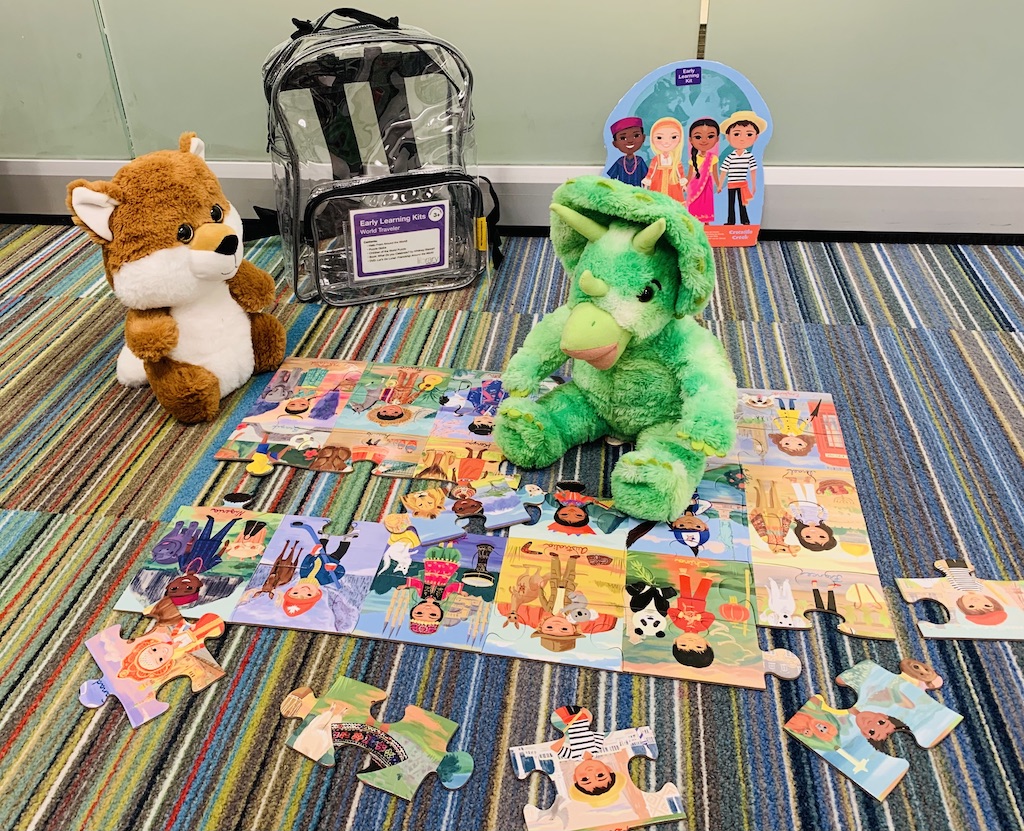
Children of the World puzzle is a great tool to help start the discussion of children around the world. The puzzle includes 18 children from 18 different countries. Building the puzzle will also improve your child's hand-eye coordination, strengthen their fine motor skills, and allow them to practice critical thinking and problem-solving skills.
A Puzzle Globe
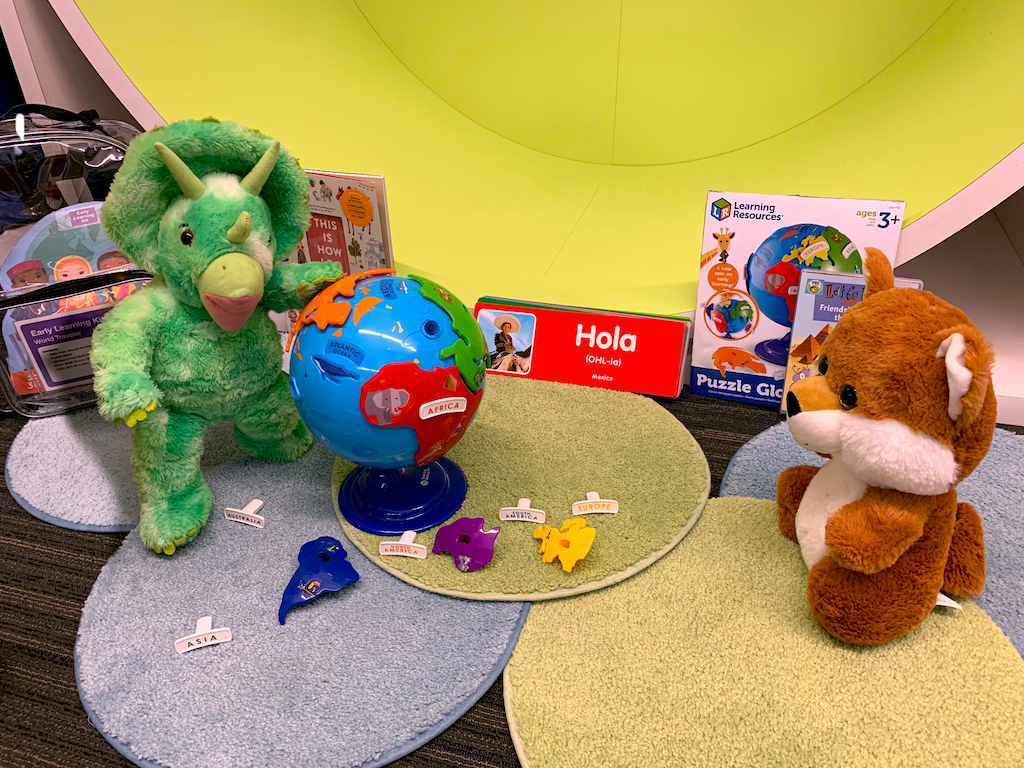
Puzzle Globe from Learning Resources. The puzzle globe will allow your little one to build their fine motor skills and start to practice spatial awareness. The puzzle globe is an accurate globe of the world, and will allow your child to start to learn about other continents, oceans, and things that could be seen in each continent.
Learn how to say "hello" in other languages
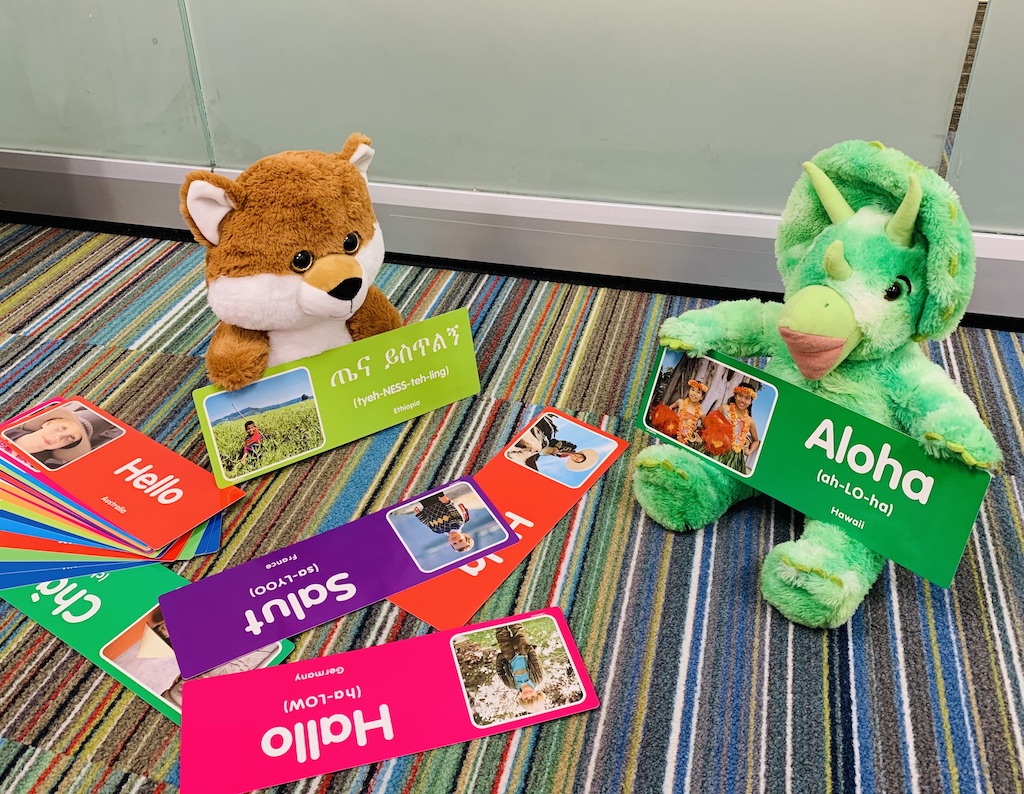
Hello From Around the World cards from Lakeshore Learning. Learn how to say "Hello" 25 different ways. Each card includes how to pronounce how to say hello in each language. These cards are a great way for children to begin to understand other languages and cultures from around the world.
Books and a movie
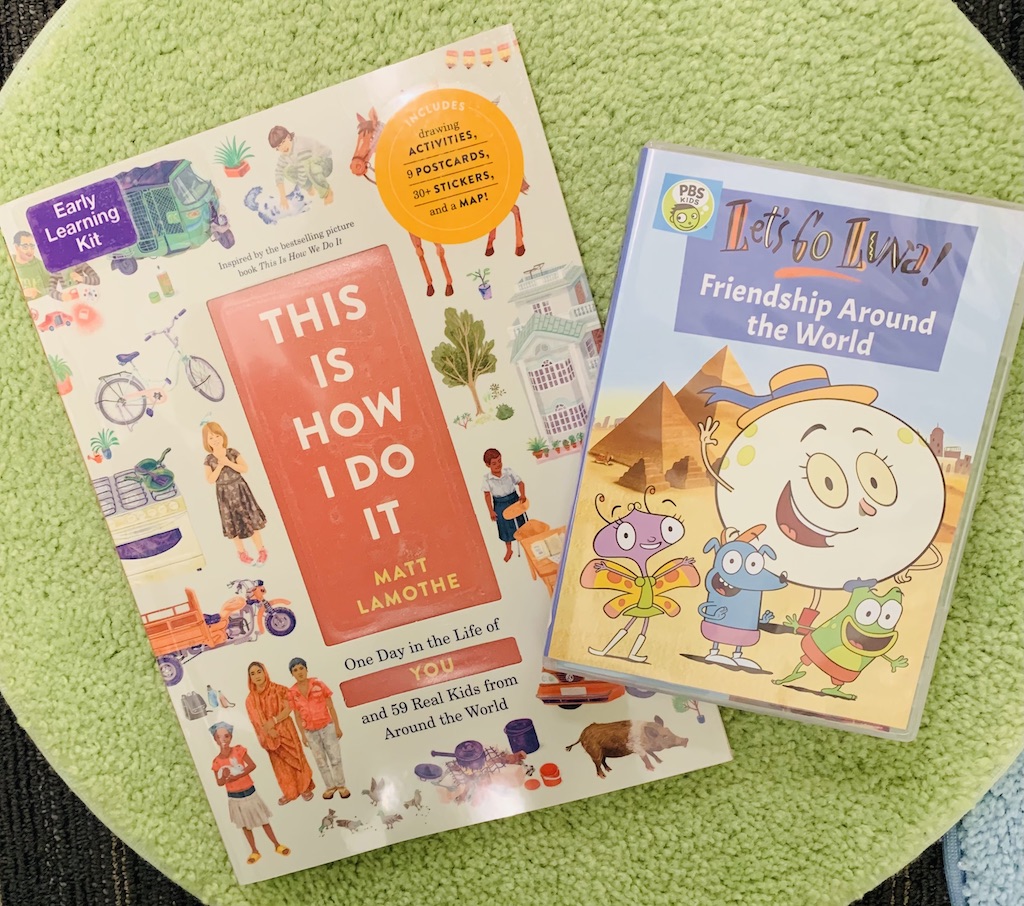
Cuddle up with this book and movie, and learn about how different kids from around the world live their lives. This will help expand your child's world.
This Is How We Do It: One day in the lives of seven kids from around the world by Matt Lamothe.
DVD Let's Go Luna! Friendship around the world.
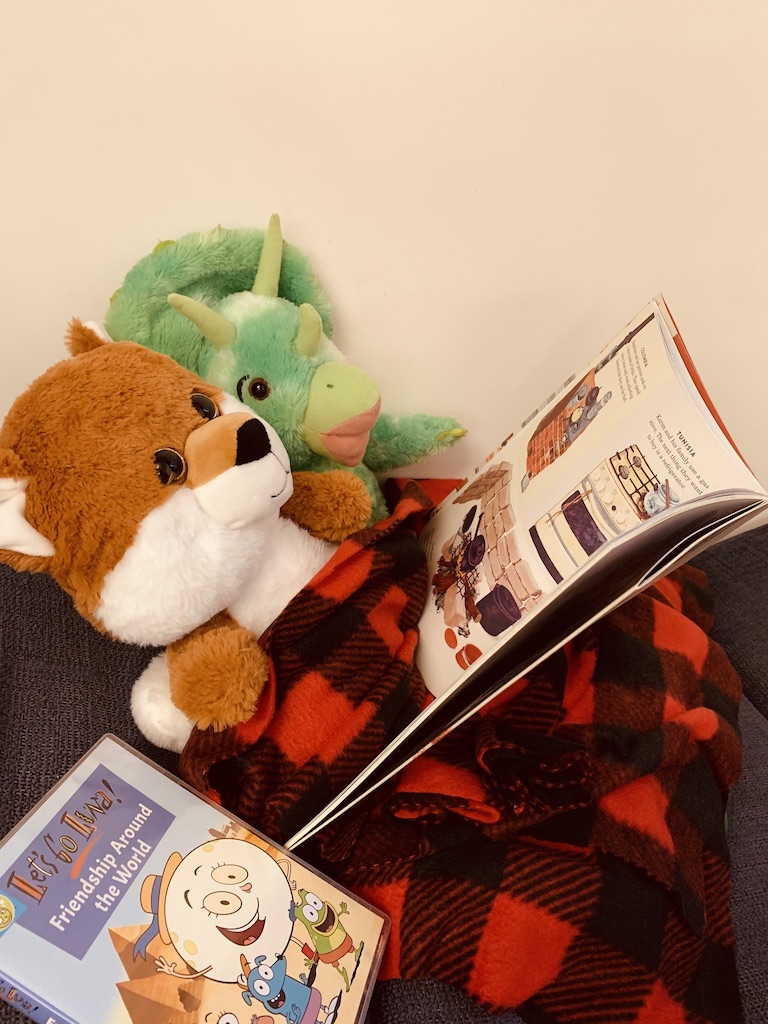
Families come in many different shapes and sizes. Learn about families with books and activities. Recommended ages 3+. The Families kit will help begin the conversation about many different types of families there are in the world, and what those families might be.
Mix and Match families
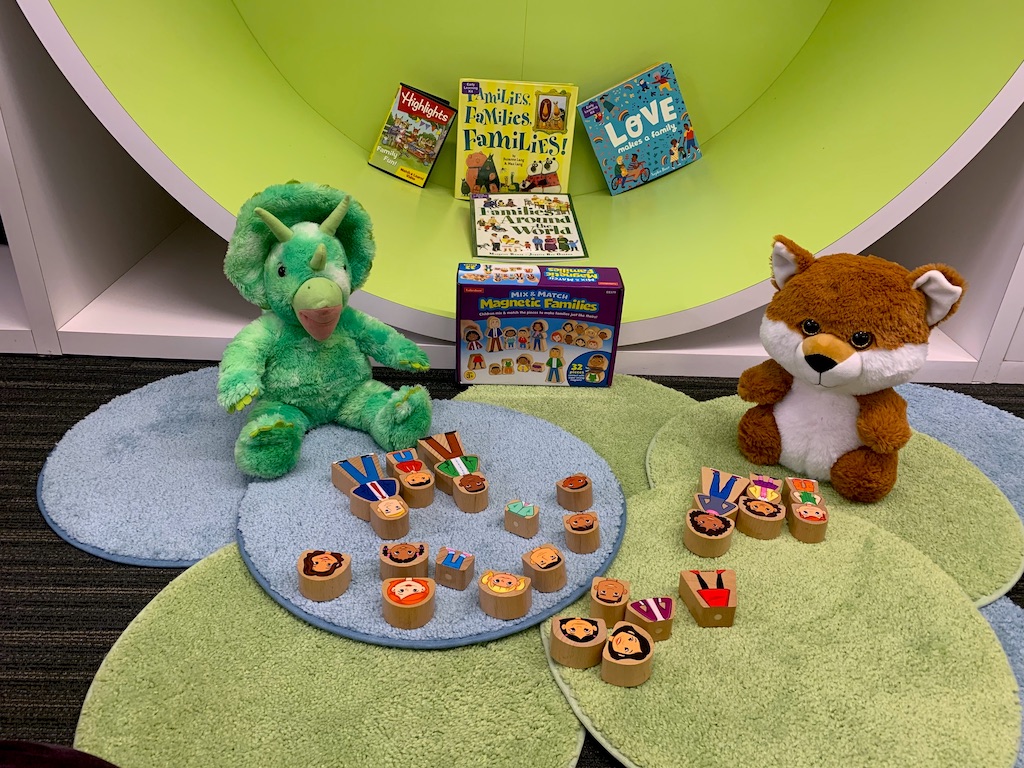
Mix and Match Magnetic Families from Lakeshore Learning. Through the Mix and Match Families set, a child can begin to explore unique and different types of families. The magnetic pieces will also help build stronger hand and eye coordination.
Books and a movie about different kinds of families
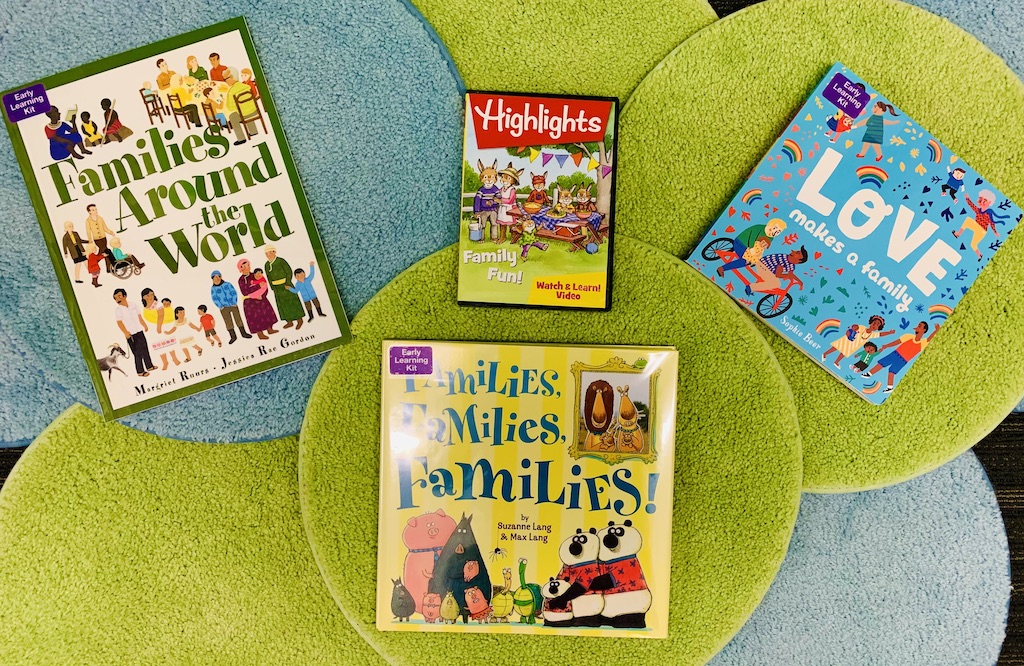
Cuddle up with these books and learn about all the different types of families in the world today. Learn about the importance of family, and the love of a family. These titles are a great way to begin to discuss with your child your family and other types of families they may know.
Families Around the World by Margriet Ruurs, illustrated by Jessica Rae Gordon
Love Makes a Family by Sophie Beer
Families, Families, Families! by Suzanne Lang & Max Lang.
DVD: Highlights: Family Fun!
Both the World Traveler and Families kits will help keep your child engaged and learning about different cultures, places, and people from all around the world.
Check out all of the different Early Learning Kits available at the library.
 Youth Services Assistant Librarian MaryJo
Youth Services Assistant Librarian MaryJo